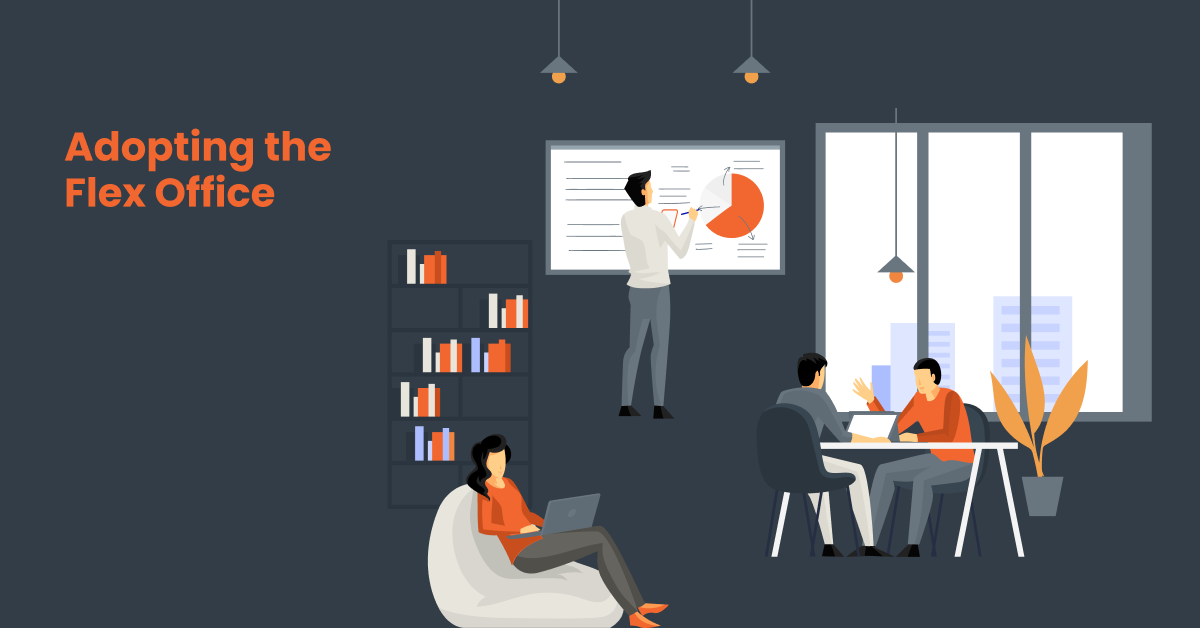Spring cleaning for companies
Spring is often synonymous with renewal. It’s a good time of year to tidy up and clean up. So why not take advantage of the beautiful spring sunshine to make some changes in your business?
Read the article »Over the past year, the coronavirus pandemic has disrupted the daily lives of many employers.
Many have had to adapt to this new reality, in addition to having to manage this ever-changing period alongside employees.

However, long before the arrival of Covid-19, many companies had already turned to telecommuting, or the concept of a mobile office, to give their employees greater flexibility, but also to reduce cost.
There are many ways a company may choose to set up its work environment.
Even if remote work is the most common, many organizations like to be able to offer their employees the choice to come to the office every so often to work.
The concept of having a Flex Office consists of rearranging the workspace of an organization so that no one employee has a workspace to call their own.
Employees work in a common space, where they share desks with colleagues and move their personal belongings from one desk to another, depending on availability.
Regardless of whether it’s a closed or open-concept office, the Flex Office is designed to allow employees to work in an atmosphere that promotes productivity. There are meeting rooms, rest rooms, places to load computer equipment, etc.
Depending on their psychological state, the availability of workstations and the tasks to be accomplished, a worker can decide where they want to work within the premises.
Nomadism: This means that even though each employee has a desk assigned to them, they can work wherever they want.
Desk Sharing: There is an equal number of employees and desks in the company, but no desks are assigned to employees.
Hot Desking: Employees have no desks assigned and the number of available desks is less than the number of employees.
Due to its multiple benefits, we can safely assume that the rate of companies that made the leap to Flex Office had to increase, especially because of the pandemic.
The Flex Office allows :
Of course, like in any good practice, the flex office also has some drawbacks.
Before the pandemic, many employers believed that working at home meant non-productivity.
“At home, there are more distractions, we’re not there to see what they’re doing…”
It takes a lot of trust on the part of an employer to let employees work from home.
However, with work-from-home requirements now in place for over a year, many companies have noticed that employees are no less effective at work because they are at home.
In addition, some employees love telecommuting while others would like the chance to combine the two.
That’s why many companies are seriously considering redesigning their offices to move towards a work style that is closer and closer to the Flex Office.
Now, the concern is how to successfully implement such a work environment in an already well-founded company?
The main issue behind the Flex Office is to ensure the availability of workspace.
A company must have a good reservation system to ensure that time slots are coordinated and that employees do not come to the office only to realize that the workstation they had reserved is already taken.
You can eliminate that risk with a tool like Hector
Hector is not only useful to help you manage your inventory! Thanks to its reservation module, companies are also able to plan the capacity of their office space by letting employees reserve their office online.
It also allows you to track the employees who were in the office at a specific time, which is very useful when you need to produce a contact tracing list within the company.
Whether it’s for managing your equipment, meeting rooms or workstations, Hector is your ally for a successful flex office implementation! So, what are you waiting for to modernize your company?
Spring is often synonymous with renewal. It’s a good time of year to tidy up and clean up. So why not take advantage of the beautiful spring sunshine to make some changes in your business?
Read the article »Maintaining an up-to-date inventory is very important, but it is even more so for museums and art galleries that have many valuable collections. An art inventory must be well managed and well preserved to ensure its longevity over time.
Read the article »ISO standards are international standards that indicate the best procedures to follow for certain industries.
These standards are as much about how to design a product, as they are about managing processes and materials.
Read the article »